September 23 – December 15, 2019
Harrison Gallery
Arcadia Exhibitions is pleased to present “Make an Exhibition: Arcadia’s Outdoor Sculptures” in the Harrison Gallery on view from September 23 through December 13, 2019.
“Make an Exhibition” is an Art History seminar in which students generate a show for one of Arcadia’s gallery spaces. This semester, the class is developing an exhibition based on the University’s collection of nine outdoor sculptures, which includes works by Sylvan Bianco, Charles Ginniver, William King, Henner Kuckuck, Louise Nevelson, Jill Sablosky, and Glen Zweygardt. Documentation of the sculptures produced by Philadelphia-based photographer Sam Fritch is currently on view in the Harrison Gallery.
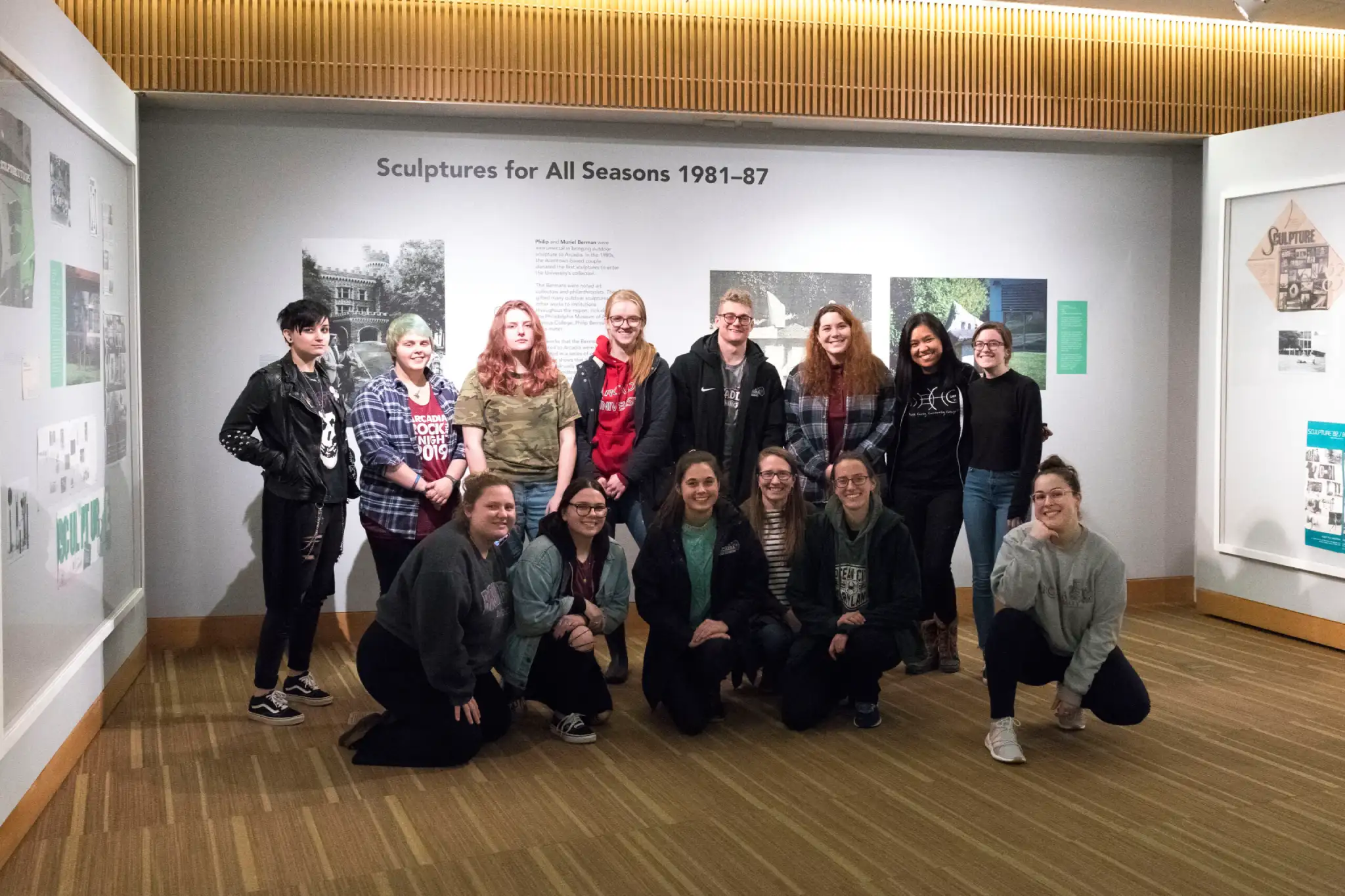
The students and faculty involved in the Make An Exhibition seminar. (Left to right starting from back) Perri Schlosser, Sarah Fisher, Emily Pitcairn, Kayla Kelly, Zach Bondurant, Gabi Gulla, Poppy Sangthong, Johanna Schrecengost, Reanna Bull, Hannah Weissberger, Nicole Carocci, Elizabeth Ferrell, Alyssa McNece, Crystal Guzzi. Photo: Sam Fritch
Through research, observation, surveys, field trips, and readings, the students enrolled in the course are discovering the value the sculptures currently bring to the campus community and determining ways to increase their impact. The class is considering a number of curatorial activities to boost awareness of and engagement with the sculptures, including creating plaques, building a website, and organizing educational programming.
Students enrolled in the course are using the Harrison Gallery as a laboratory to test ideas and engage the public. The show will be on view from September 23 to December 13, 2019.
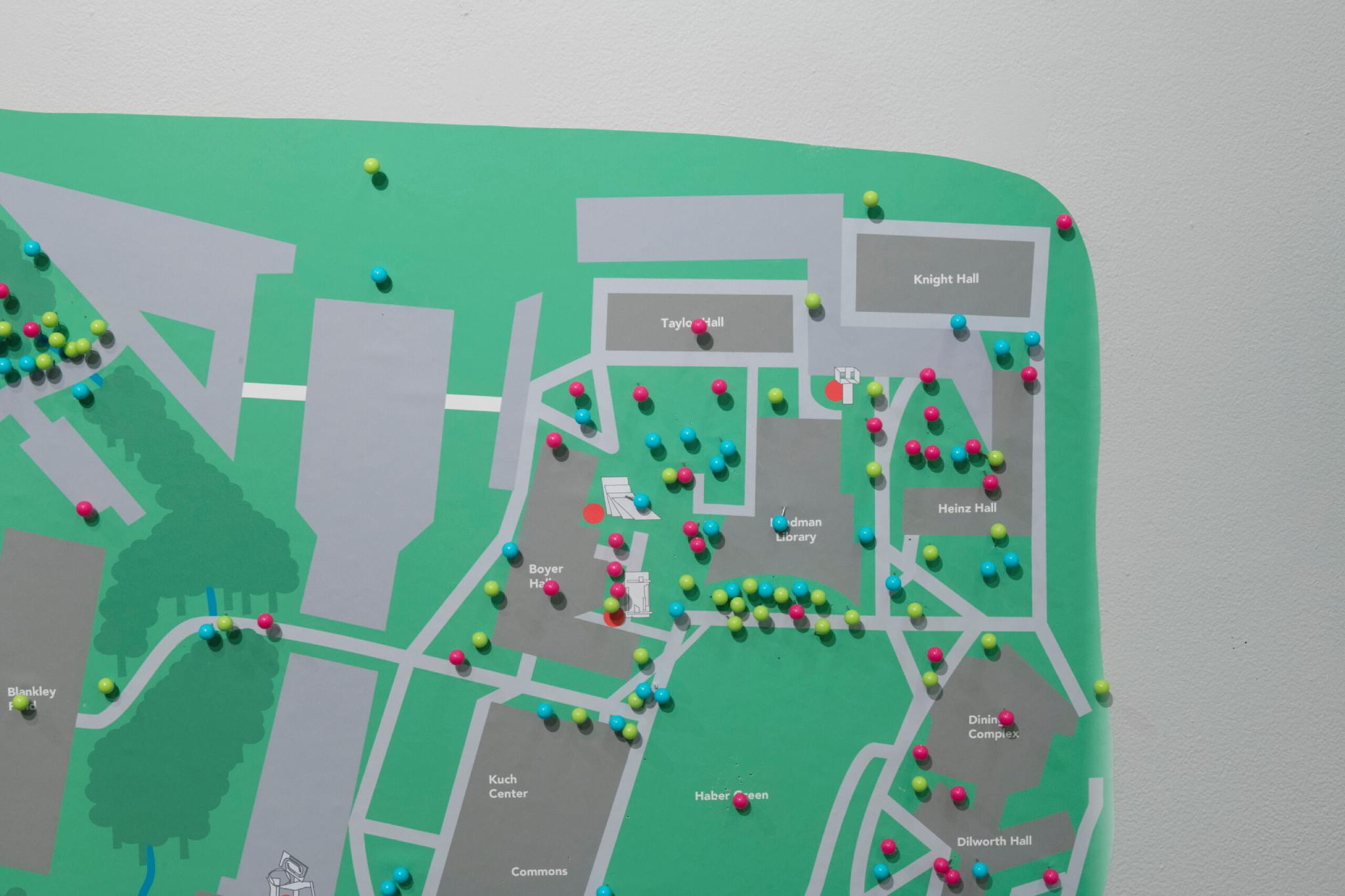
Installation view, "Make An Exhibition: Arcadia's Outdoor Sculptures", Harrison Gallery, 2019, photo: Sam Fritch
In the spring of 2018, the inaugural iteration of the seminar was responsible for the exhibition “Camera Work: Making a Medium” presented in the Rosedale Gallery. The show included photographic prints from the seminal publication Camera Work created by Alfred Steiglitz (1864-1946), and marked the public unveiling of these items, donated to Arcadia University by Marilyn Steinbright in 2016.
The students enrolled in Make an Exhibition, the course responsible for this show, encountered this question when researching Louise Nevelson’s Gate V (1960). When the sculpture was initially hung on the wall of Boyer Hall in 2002, its orientation did not pose a concern due the support hardware attached to the back of the work. However, the students discovered that the Smithsonian American Art Museum hangs its version of the sculpture rotated 180 degrees from the way Arcadia’s version is hung. Was the orientation of the University’s sculpture incorrect?
The class posed this question to the Louise Nevelson Foundation. To their relief, they discovered that either orientation is acceptable. Nevelson hung various iterations of the sculpture in different ways. She changed its orientation as the materials and context of the sculpture evolved, as she cast the original wooden sculpture to make bronze replicas and as it moved from a friend’s garden into institutional collections like Arcadia’s.
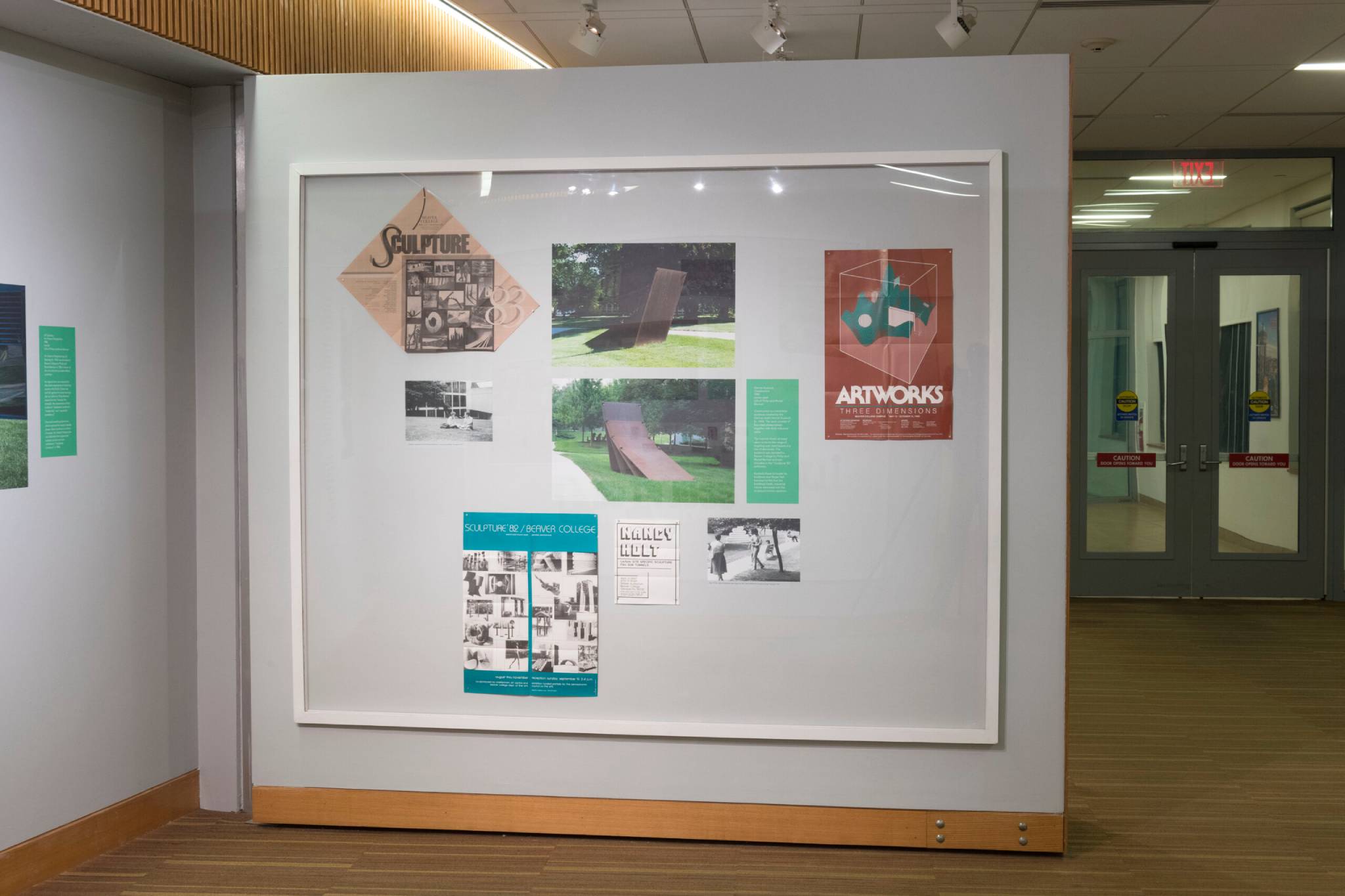
Installation view, "Make An Exhibition: Arcadia's Outdoor Sculptures", Harrison Gallery, 2019, photo: Sam Fritch
Tilted Passthrough by Glenn Zweygardt (b. 1943) was the first work included in Arcadia’s outdoor sculpture collection. It was exhibited in Sculptures ‘81, one of several temporary outdoor sculpture exhibitions that took place at Arcadia in the 1980s. Tilted Passthrough became a permanent fixture on campus when it was donated to the University by well-known art philanthropists Philip and Muriel Berman following the exhibition. The sculpture is made from weathered steel, which makes it resistant to damage from exposure to natural elements. Zweygardt intended the empty spaces between the arching and twisting geometric forms to capture the environment around the sculpture, creating a dynamic interplay between site and work.
Troika is a sculpture by the American artist Charles Ginnever (1931-2019). Like most of the artist’s works, it uses corten steel to play with geometry and space. The interlocking rhomboids appear to transform into different shapes as viewers move around the sculpture. This effect prompted Ginnever to claim, “the only way to look at my work is to use your feet.” The sculpture is related to Ginnever’s much larger work Fayette: For Charles and Medgar Evers (1971), which is in the collection of the Storm King Art Center in Mountainville, New York. Troika is currently located behind the Landman Library in a crescent of trees that encourages viewers to experience the sculpture in the round.
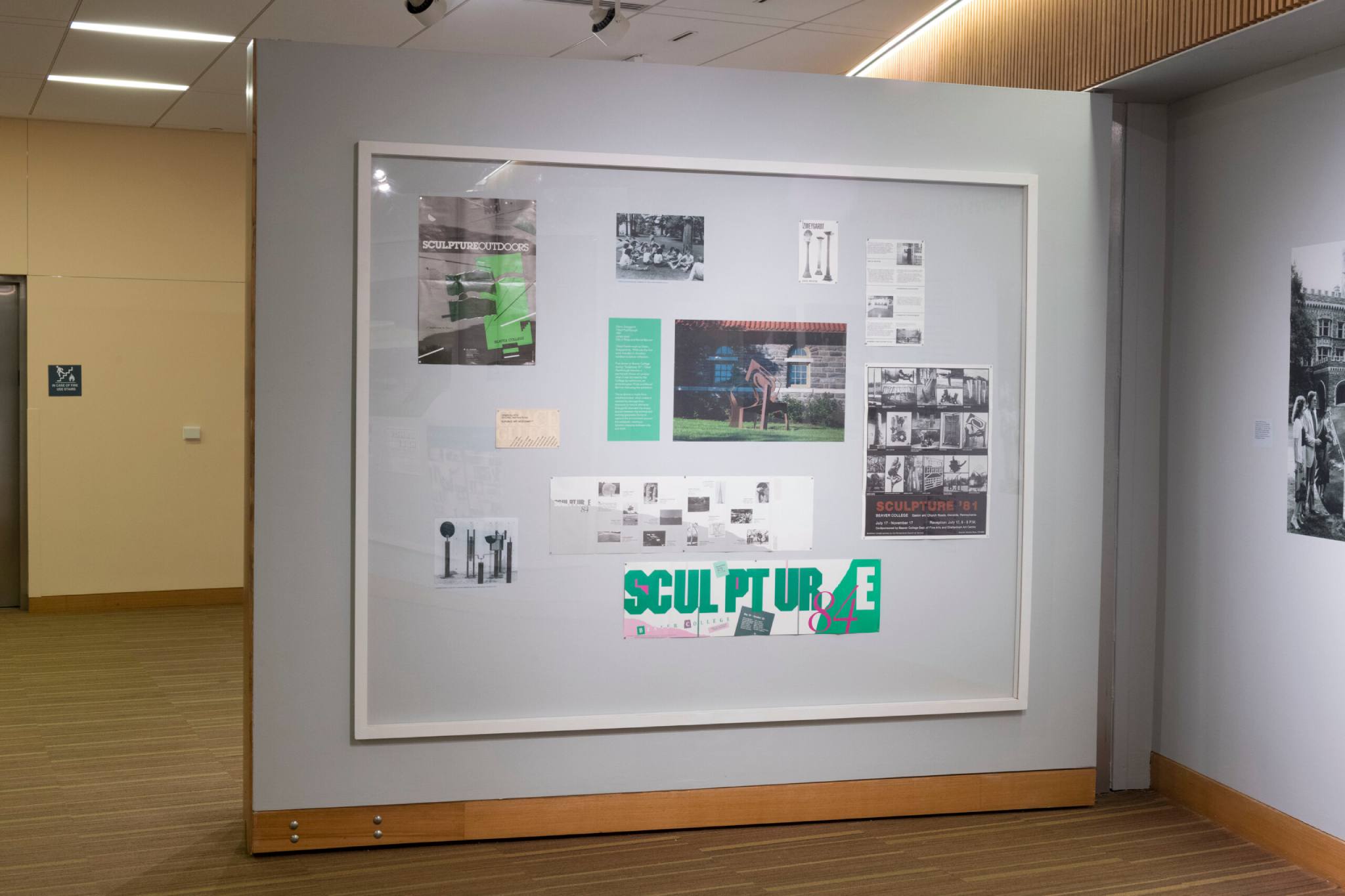
Installation view, "Make An Exhibition: Arcadia's Outdoor Sculptures", Harrison Gallery, 2019, photo: Sam Fritch
Construction is a minimalist sculpture created by the German artist Henner Kuckuck (b. 1940). The work consists of four steel plates lashed together with thick industrial cable. The layered sheets of metal seem to be on the verge of toppling over, reminiscent of a line of dominoes. The sculpture was donated to Arcadia University by Philip and Muriel Berman and was included in the Sculpture ‘83 exhibition. Kuckuck chose to locate his sculpture near Boyer Hall because he felt that the building’s harsh, industrial nature resonated with the sculpture’s similar aesthetic.
An Ocean’s Perspective by Jill Sablosky (b. 1954) was donated to Arcadia University by Philip and Muriel Berman in 1986 in honor of the school’s then president Bette Landman. Its organic form was inspired by the artist’s experience of watching waves in the Pacific Ocean rise and fall against the shore during a trip to California. Philip Berman stated that the “beauty, the strength, the composition of the sculpture” represents Landman’s “leadership” and “successful presidency.” The work’s swelling stone form, which captures the ocean’s steady power, likens Landman to a force of nature. An Ocean’s Perspective was Sablosky’s first large-scale outdoor project and was exhibited in Sculpture Outdoors, one of several public art exhibitions held at Arcadia in the 1980s.
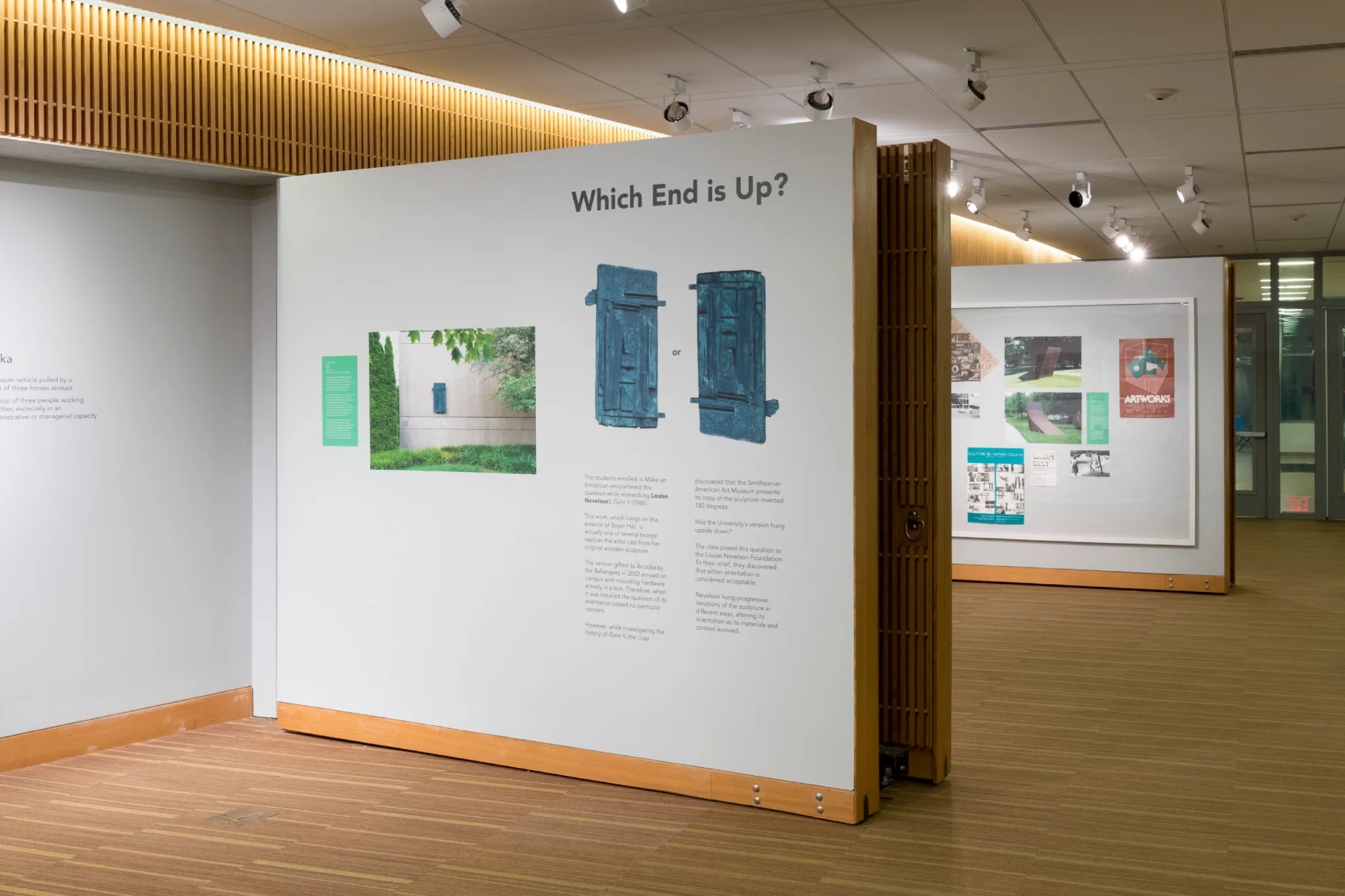
Installation view, "Make An Exhibition: Arcadia's Outdoor Sculptures", Harrison Gallery, 2019, photo: Sam Fritch
Louise Nevelson (1899-1988) became an internationally recognized artist while working in New York City in the 1950s. She was primarily known for sculptures she created from discarded wood, steel, bronze, aluminum, and plexiglas. Nevelson composed Gate V from scraps of wood. It was originally part of a larger installation that Nevelson hung on the wall of a friend’s garden. The abstract composition was then cast in bronze to create a durable wall relief—several copies of which exist—that was first exhibited at the Whitney Museum of American Art under the title Illumination-Dark. While now separated from this larger installation, Gate V still gestures to its original site by creating the impression of a weathered door perhaps to a forgotten, now wild garden. The work conveys Nevelson’s idea of resurrection and the cycle of nature, which she enacted by creating her art from recycled materials.
Nestled into one of Arcadia’s idyllic hills, Memory by William King (1925-2015) is a seated, aluminum figure that holds a book in its outstretched hand. King was an American sculptor who used metal, vinyl, and wood to create witty figurative sculptures. Memory is representative of King’s ability to capture expressive figures using minimal, gestural forms. Many local residents may be familiar with King’s other monumental sculptures in the region, such as Stroll (Strickmen) (1995), a group of three aluminum figures crossing the South Street footbridge. Arcadia’s sculpture is located behind the castle, a site proposed by Bette Landman and inspired by her love of reading.
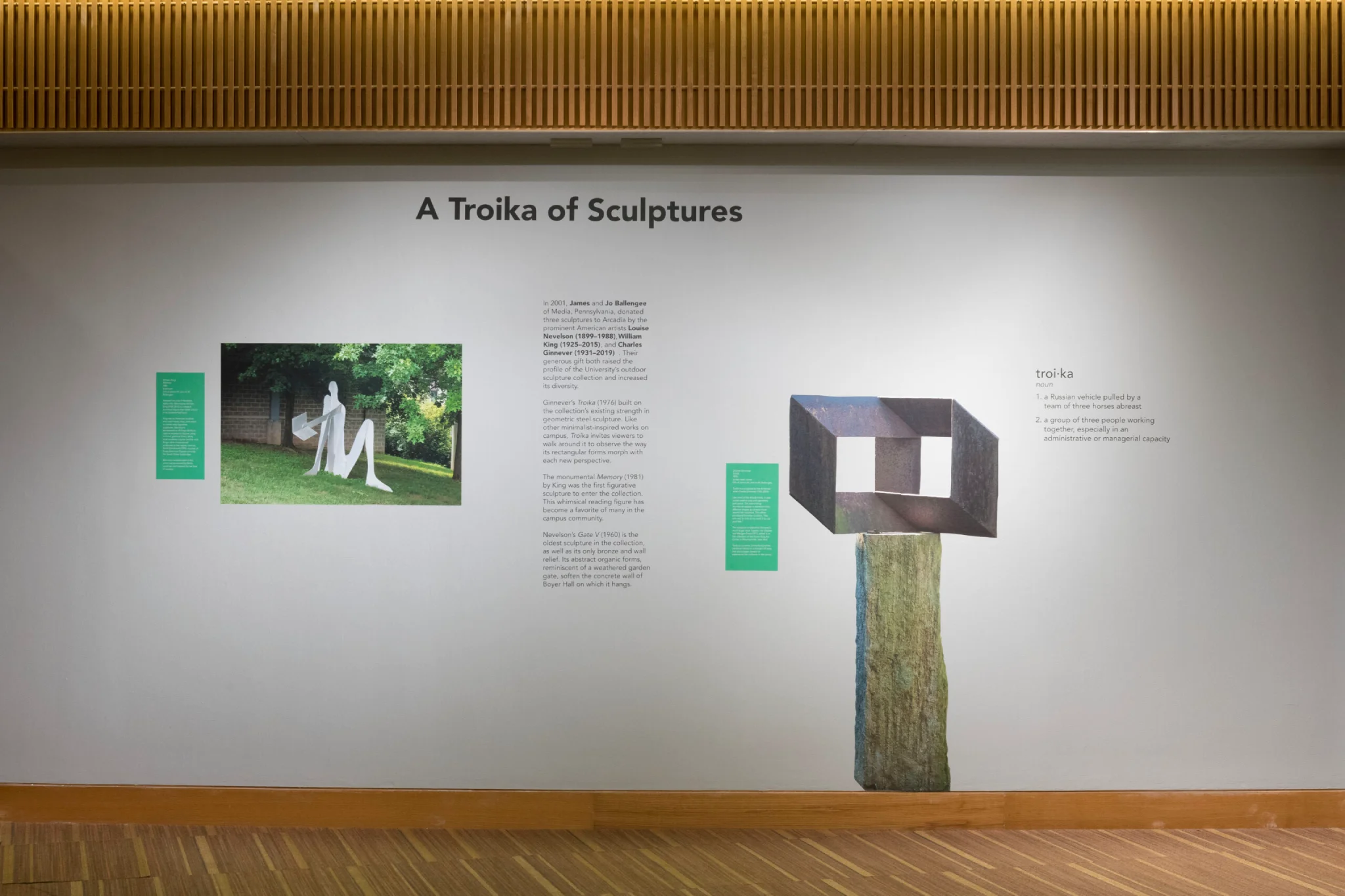
Installation view, "Make An Exhibition: Arcadia's Outdoor Sculptures", Harrison Gallery, 2019, photo: Sam Fritch
Sandpiper, Penguins, and Man were created by local, self-trained artist Silvan Bianco (1912-2004). In the early twentieth century, Bianco immigrated from his native Italy to Ardmore, Pennsylvania, where he founded Ardmore Bianco Welding in 1936. Despite his lack of a formal art education, he created works from scrap metal and recycled materials from his welding shop. Bianco’s sculptures are crafted from various types of steel, which he sometimes painted. Bianco displayed his whimsical works in and around his welding shop, where customers could see and possibly purchase them. Donald and Dorothy (‘56) Kardon donated the three sculptures to Arcadia University from their personal collection in 2010.
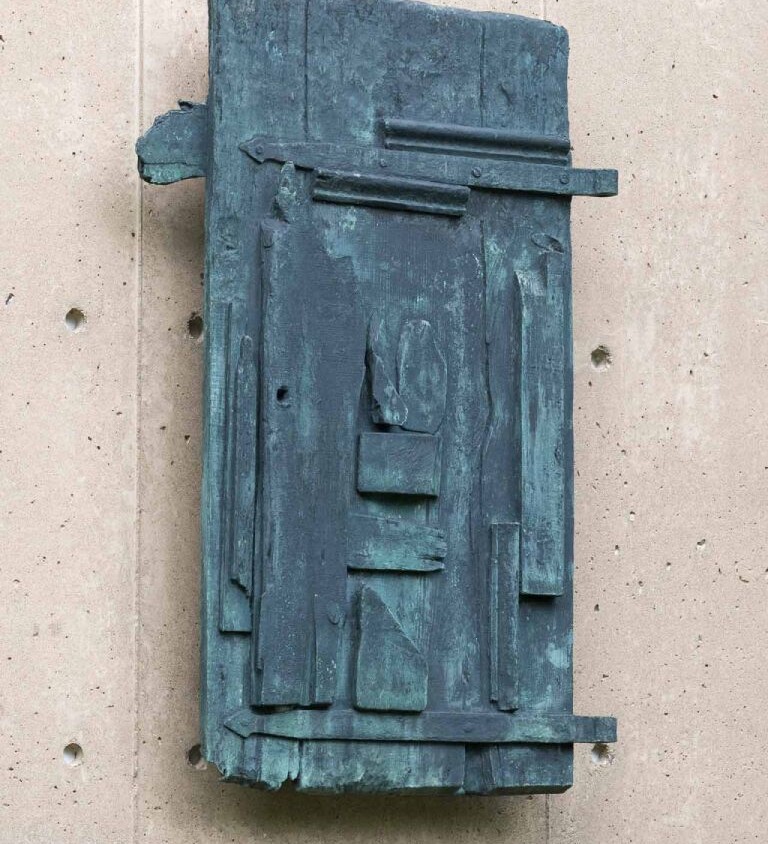
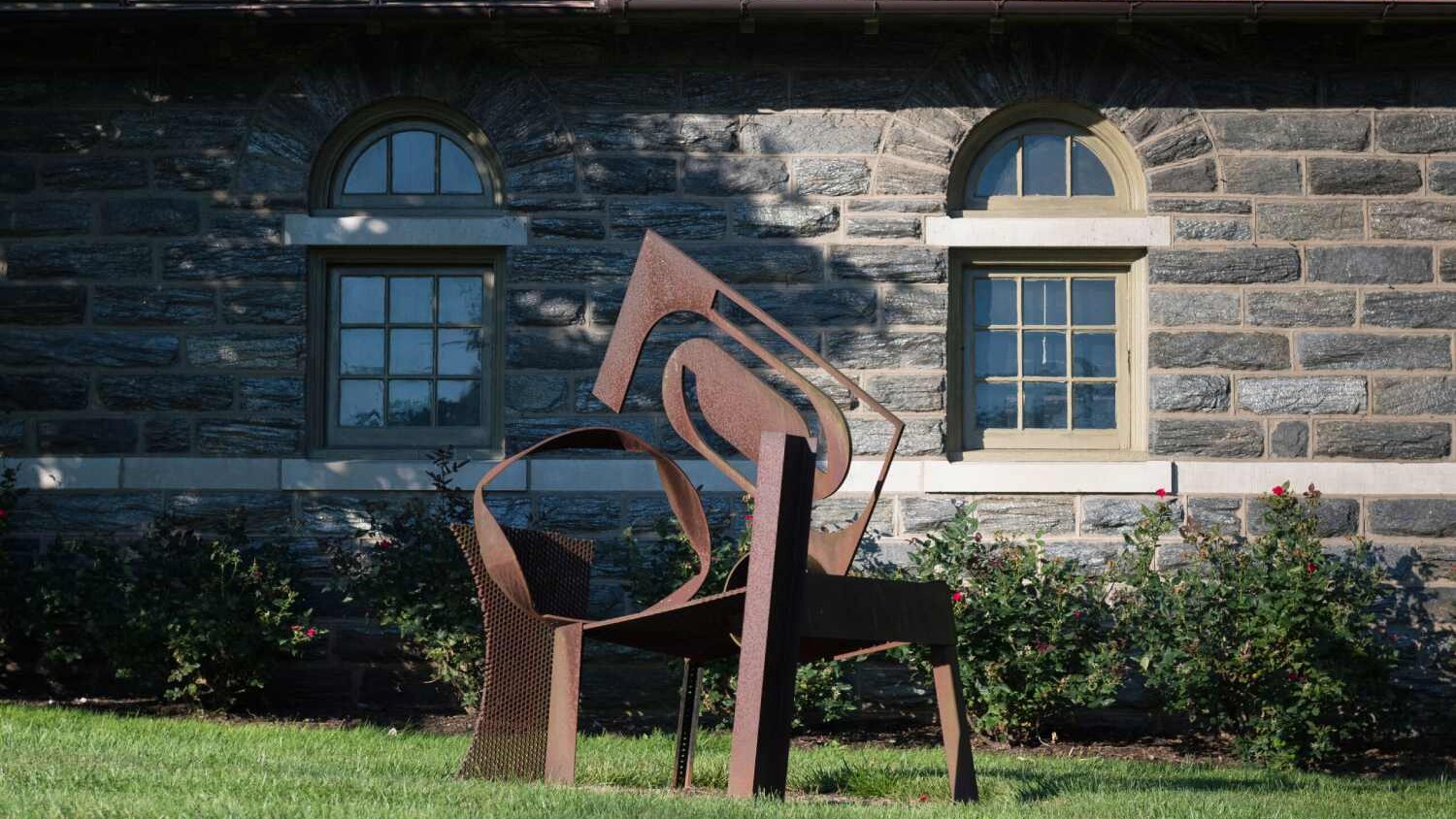
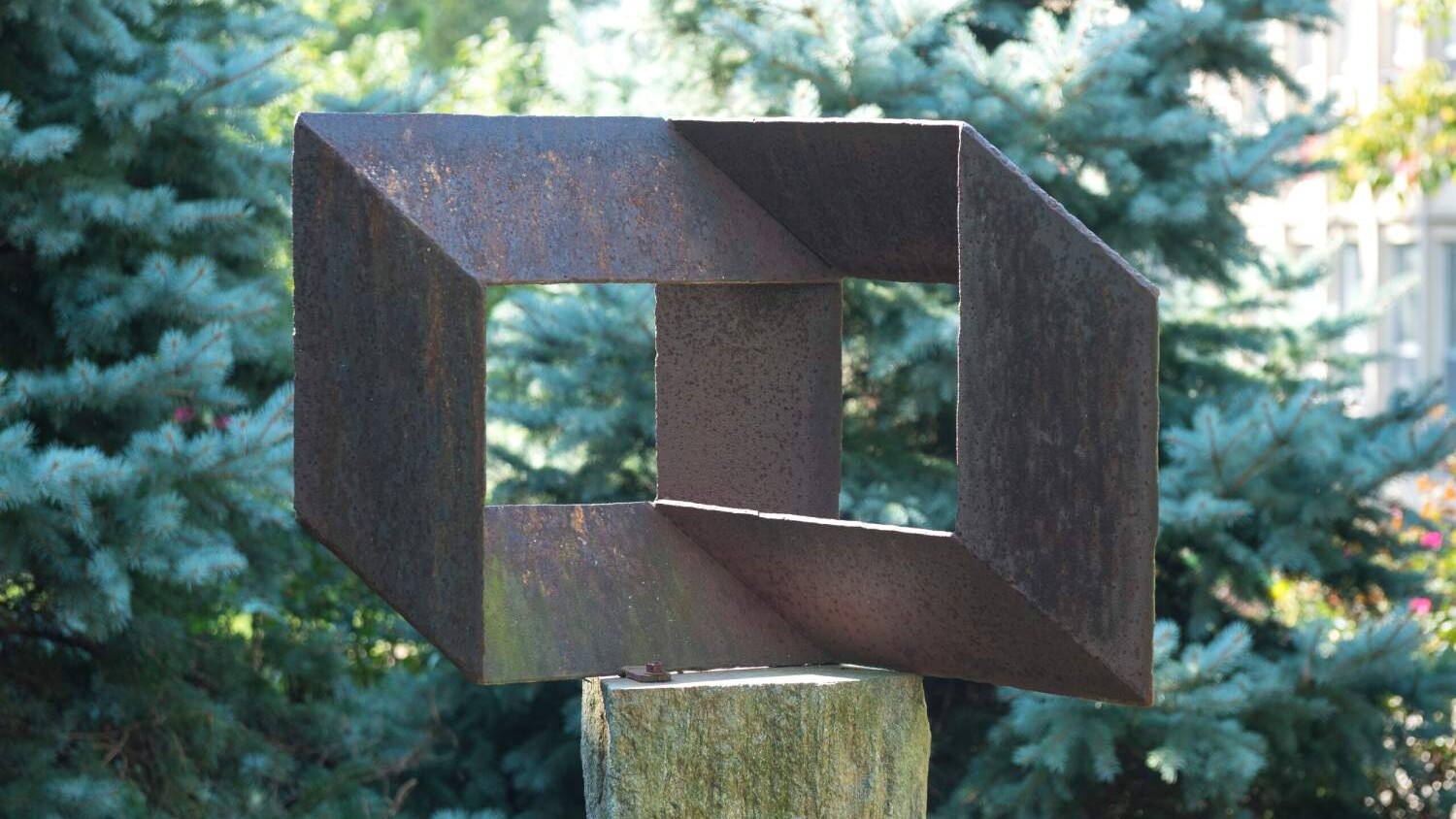
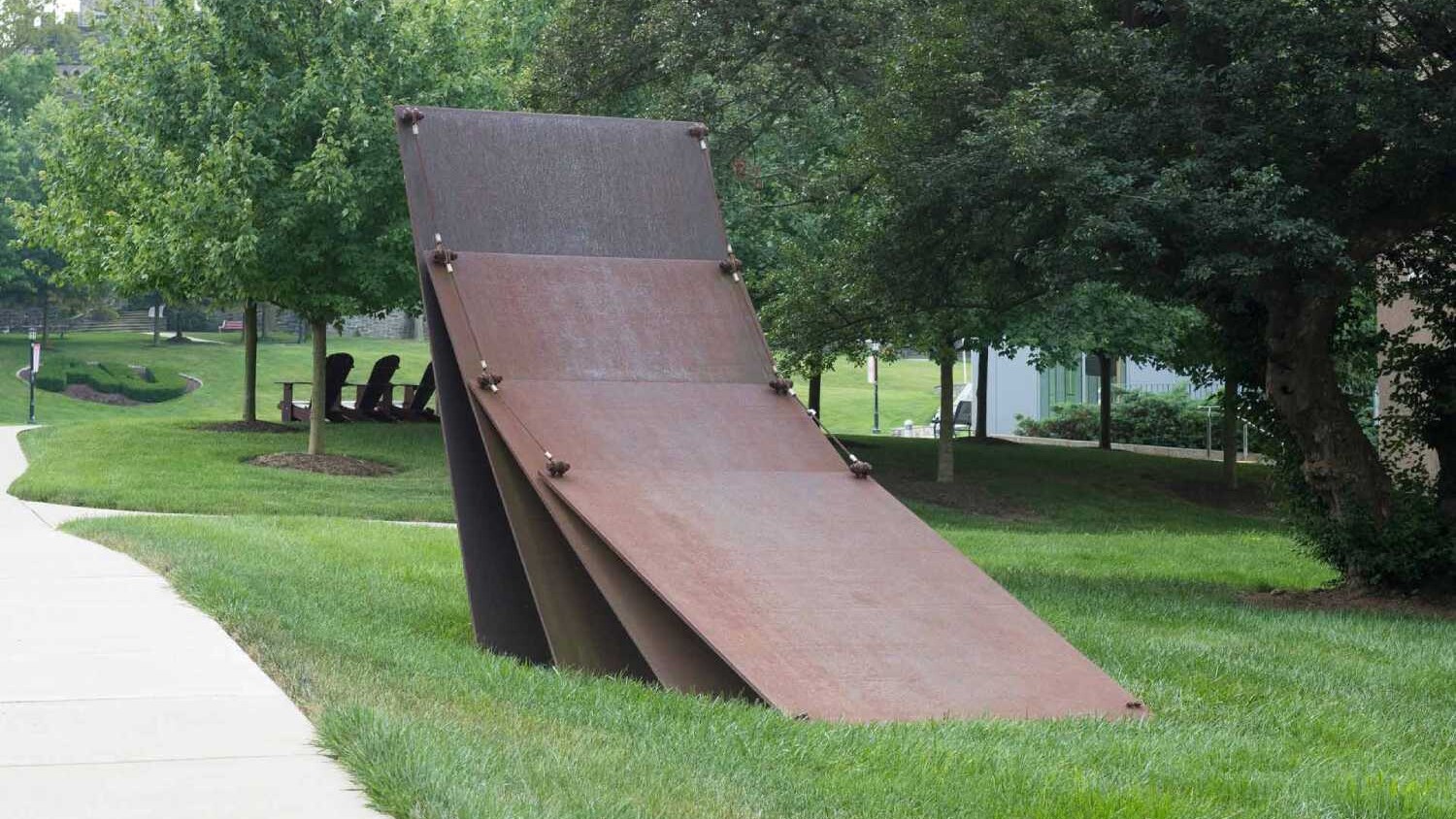
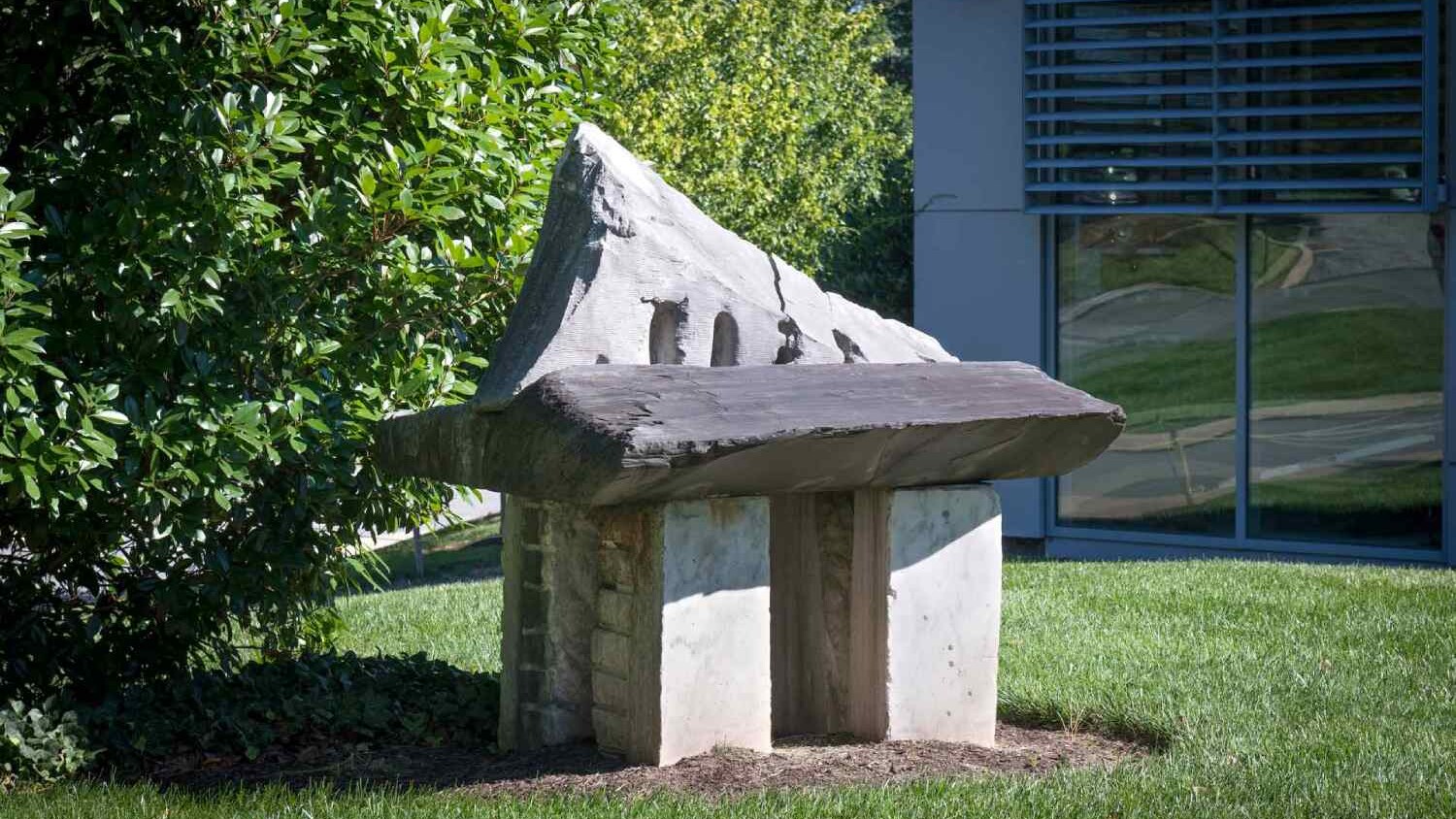
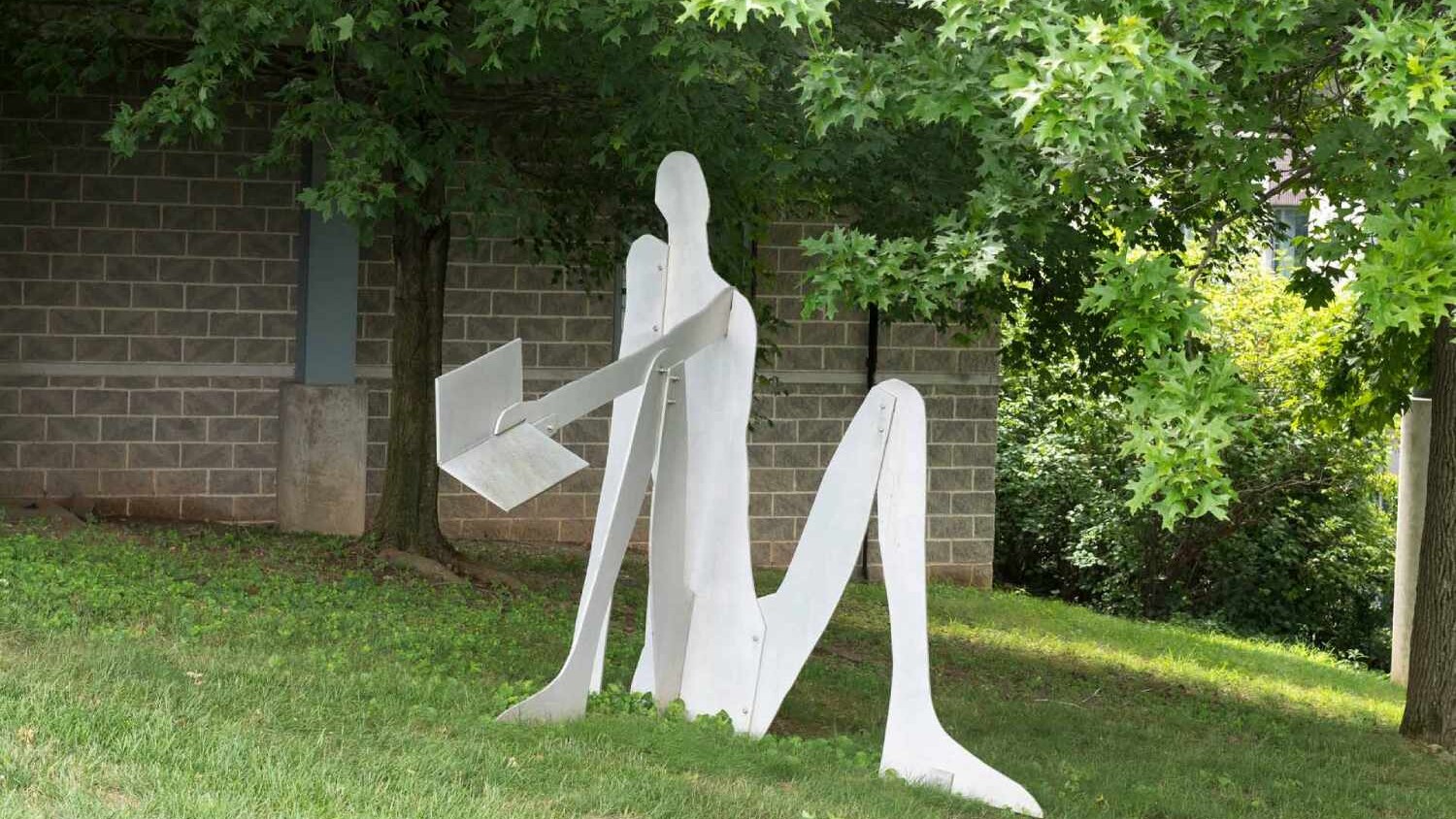
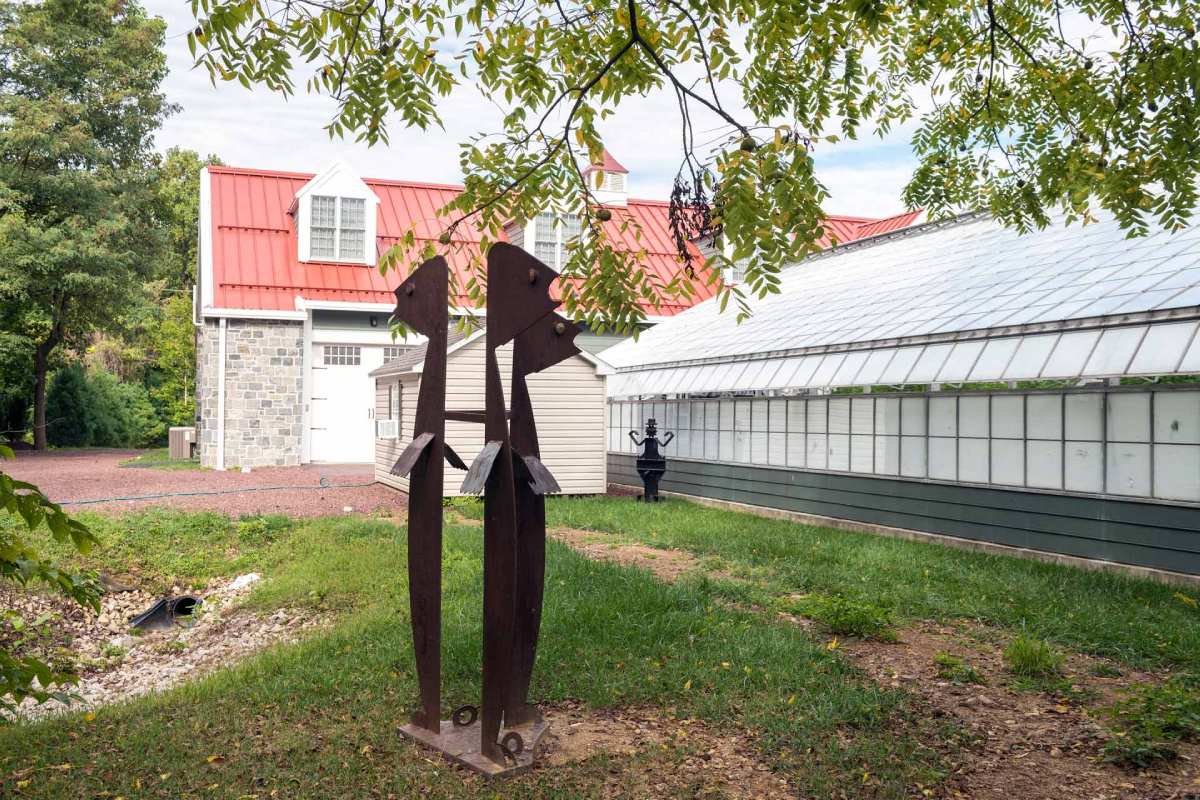
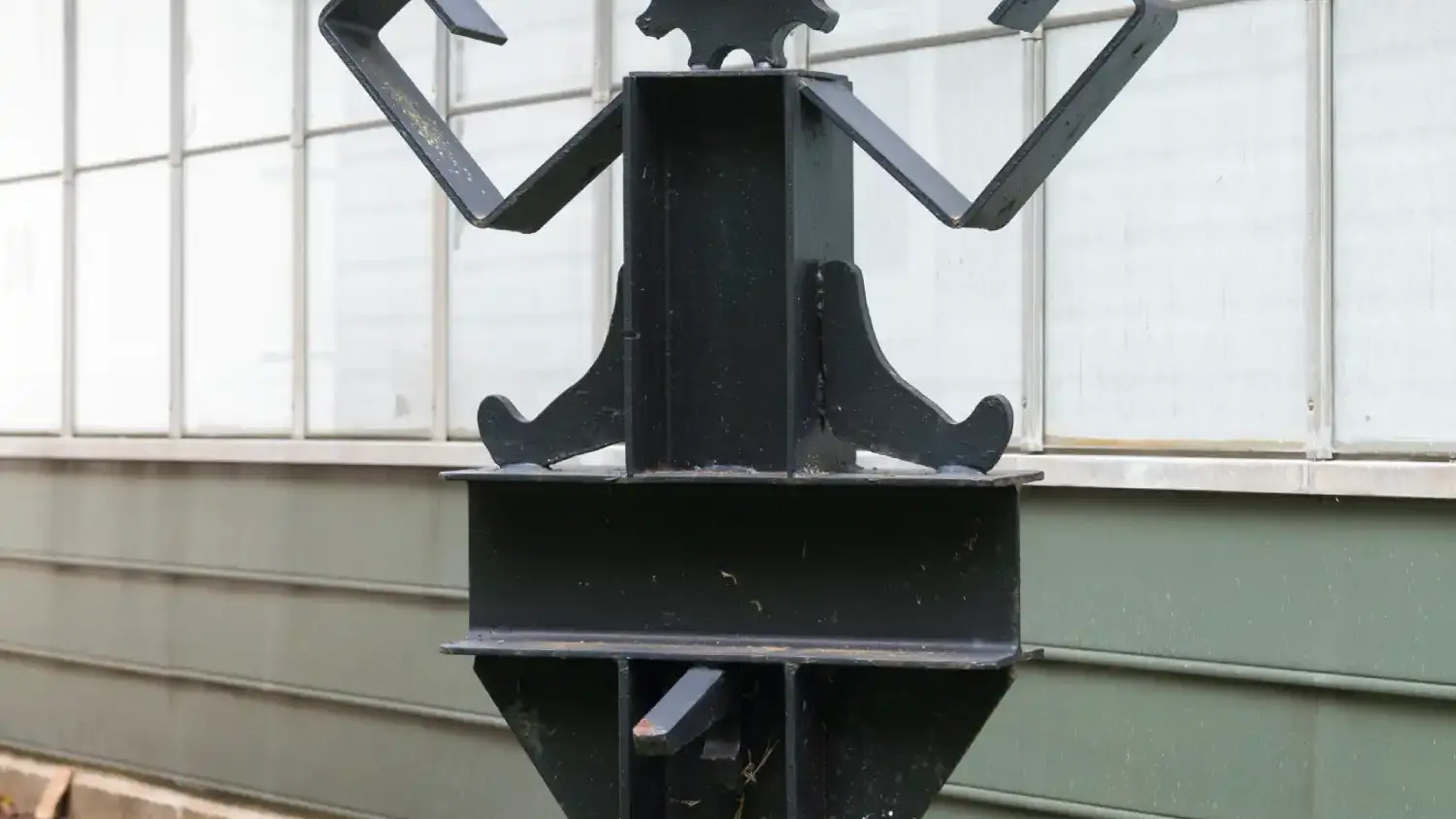








Louise Nevelson (1899–1988), Gate V, 1960, bronze, A gift from James M. and Jo M. Ballengee Arcadia University Permanent Collection photo: Sam Fritch
Glenn Zweygardt, Tilted Passthrough, 1981, corten steel, Gift of Philip and Muriel Berman
Charles Ginnever, Troika, 1976, corten steel, stone, Gift of James and Jo Ballengee
Henner Kuckuck, Construction, c. 1983, corten steel, Gift of Philip and Muriel Berman
Jill Sabolsky, An Ocean's Perspective, 1986, marble, Gift of Philip and Muriel Berman
William King, Memory, 1981, aluminum, Gift of James and Ballengee
Silvan Bianco, Penguins, c. 1960s, steel, paint, Gift of Donald and Dorothy Kardon
Silvan Bianco, Man, c. 1960s, steel, paint, Gift of Donald and Dorothy Kardon
Louise Nevelson (1899–1988), Gate V, 1960, bronze, A gift from James M. and Jo M. Ballengee Arcadia University Permanent Collection photo: Sam Fritch
Glenn Zweygardt, Tilted Passthrough, 1981, corten steel, Gift of Philip and Muriel Berman
Charles Ginnever, Troika, 1976, corten steel, stone, Gift of James and Jo Ballengee
Henner Kuckuck, Construction, c. 1983, corten steel, Gift of Philip and Muriel Berman
Jill Sabolsky, An Ocean's Perspective, 1986, marble, Gift of Philip and Muriel Berman
William King, Memory, 1981, aluminum, Gift of James and Ballengee
Silvan Bianco, Penguins, c. 1960s, steel, paint, Gift of Donald and Dorothy Kardon
Silvan Bianco, Man, c. 1960s, steel, paint, Gift of Donald and Dorothy Kardon
